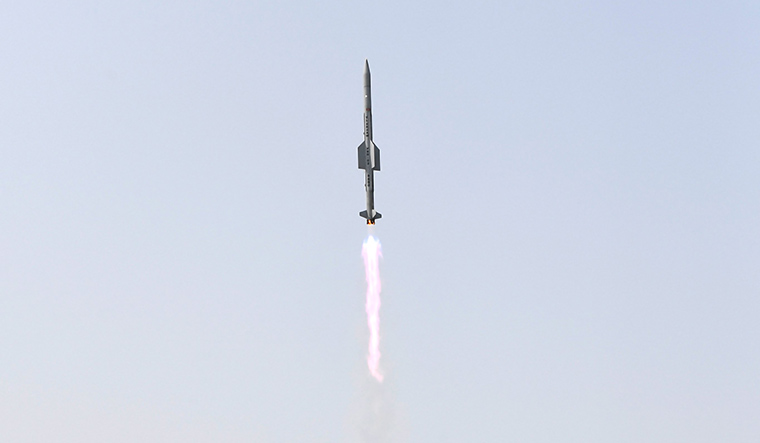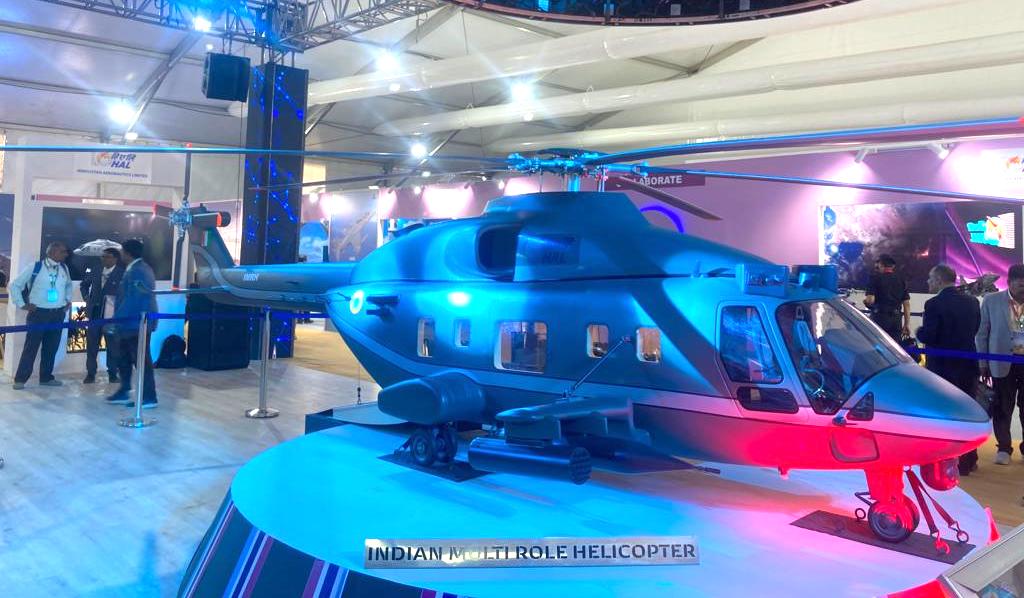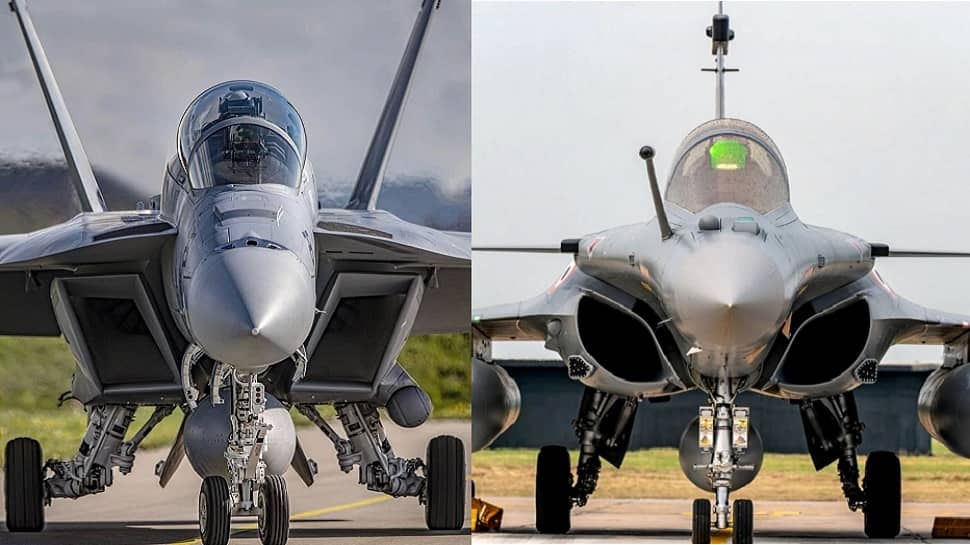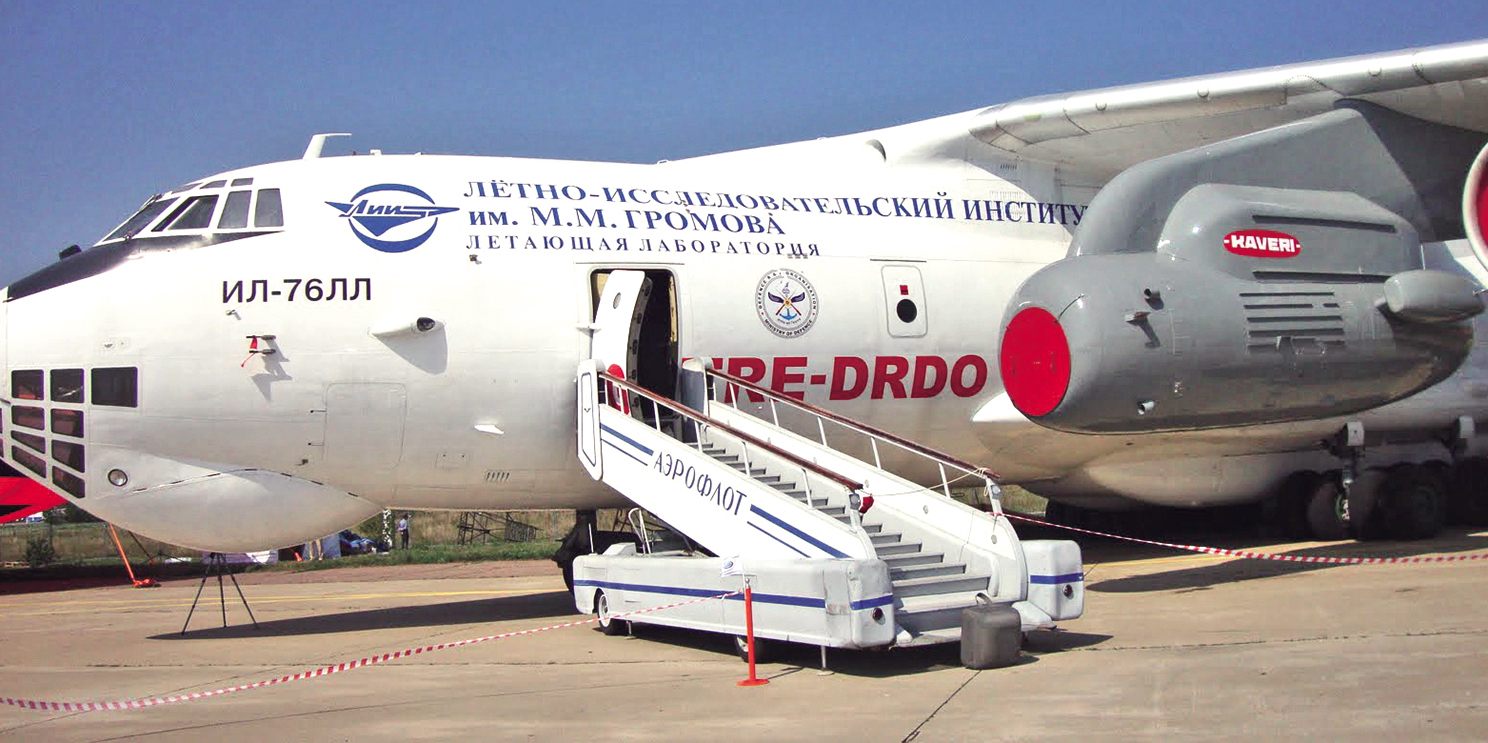Monthly Archives: July 2023
SOURCE: RAUNAK KUNDE / NEWS BEAT / IDRW.ORG


In a significant development, the Defense Research and Development Organisation (DRDO) has come to the rescue with an indigenous alternative after the Indian Air Force (IAF) abandoned plans to procure the National Advanced Surface to Air Missile System (NASAMS) three years ago. The IAF had initially sought a medium-range, network-centric air defense system jointly developed by Raytheon and Kongsberg Defence & Aerospace to bolster the security of high-value assets in the National Capital Region. However, the exorbitant cost led to the shelving of the project, prompting the quest for an indigenous solution.
Enter the Vertical Launch – Short Range Surface to Air Missile (VL-SRSAM), a quick reaction surface-to-air missile based on the Astra Mk1 BVRAAM (Beyond Visual Range Air-to-Air Missile). Initially developed primarily for the Indian Navy to replace its aging Barak-I Point Air Defense System on frontline warships, the VL-SRSAM has now emerged as a viable alternative for the IAF’s air defense needs.
Continue readingSOURCE: RAUNAK KUNDE / NEWS BEAT / IDRW.ORG


Representational image
In a groundbreaking development, a private sector company showcased its prowess in the field of defence technology by successfully developing and supplying Loiter Munitions powered by electric engines to the Indian Army. Now, the company has set its sights even higher, proposing to develop a new variant of Loiter Munitions, one that will be powered by a Small Turbojet Engine, with a thrust ranging from 0.3 to 0.8kN.
The potential of this new variant is truly remarkable. With the turbojet engine’s increased thrust, it will be able to carry a significantly larger explosive warhead, making it even more potent in neutralizing high-value targets. Moreover, this enhanced propulsion system will bestow the Loiter Munition with nearly double the range of its existing electric engine-powered counterpart. Such a substantial increase in range will allow it to cover vast distances, effectively expanding its operational capabilities and reach.
Continue readingSOURCE: RAUNAK KUNDE / NEWS BEAT / IDRW.ORG


In a significant development, the Indian Navy has finalized plans to procure 26 Rafale fighter jets from the renowned French aerospace company Dassault. Out of this procurement, four of the jets will be Twin Seater Rafale fighters, which will play a crucial role in training fighter pilots to operate the remaining 22 single-seater Rafale M fighter jets.
The establishment of a dedicated Rafale Training Squadron at INS Hansa in Goa marks a remarkable step forward for the Indian Navy’s operational readiness and combat capabilities.
Continue readingSOURCE: RAUNAK KUNDE / NEWS BEAT / IDRW.ORG


In a significant boost to India’s aerospace ambitions, Cédric Goubet, the CEO of Safran Helicopter Engines, has recently confirmed to Indian media the collaboration between Safran and Hindustan Aeronautics Limited (HAL) to develop a groundbreaking new engine. This 3,000 shp engine will be specifically designed to power HAL’s proposed IRMH (Indian Multi-Role Helicopter), an impressive 13-ton Medium Utility helicopter.
The new engine, as affirmed by Goubet, will not be a mere variant but a brand-new design, drawing upon Safran’s extensive experience and expertise in engine development.
Continue readingSOURCE: RAUNAK KUNDE / NEWS BEAT / IDRW.ORG


India’s Defence Research and Development Organisation (DRDO) has taken a significant step towards strengthening its Unmanned Aerial Vehicle (UAV) development capabilities. The organisation has extended the runway at the Chitradurga Aeronautical Test Range (ATR) by a kilometre, bringing the total length to approximately 3.13 km. This expansion aims to facilitate the testing of bigger High Altitude Long Endurance (HALE) Class UAVs, which DRDO plans to develop for the Indian Armed Forces.
The Chitradurga ATR was specifically established to conduct flights of DRDO’s Unmanned Aerial Vehicles, particularly those belonging to the Rustom family. The Tactical Airborne Platform for Aerial Surveillance-Beyond Horizon-201 (TAPAS BH-201), also known as Rustom-2 UAV, was successfully flight-tested at the Challakere ATR in November 2016.
Continue readingSOURCE: RAUNAK KUNDE / NEWS BEAT / IDRW.ORG


The Indian Navy’s decision to opt for the Rafale M (Marine) variant over the American F-18 E/F SuperHornet for its aircraft carriers has garnered attention in defence circles. Rear (R) Admiral Mukul Asthana, an esteemed veteran and aviation consultant, provides valuable insights into the factors that influenced this crucial decision. The choice is primarily attributed to the Rafale M’s lower footprint on both aircraft carriers, efficient hangar space utilization, and its compatibility with the lifts on the carriers.
One of the key considerations that swayed the Indian Navy towards the Rafale M was its smaller footprint on the aircraft carriers. Unlike the F-18 E/F Superhornet, the Rafale M is optimized for carrier-based operations, with dimensions that enable it to be efficiently stored on the carriers’ decks. The reduced footprint allows the Indian Navy to deploy a greater number of aircraft on each carrier, enhancing the fleet’s operational capabilities.
Continue readingSOURCE: RAUNAK KUNDE / NEWS BEAT / IDRW.ORG


India’s Defence Research and Development Organisation (DRDO) is taking significant strides in enhancing the country’s air defence capabilities with the expansion of its Extended Range Air Defence System (ERADS). Project Kusha known as Internally by DRDO will see latest addition to the program which will be a new Interceptor missile that will significantly boost India’s aerial defence capabilities, equivalent to the Russian S-400 Air Defence system that India has already acquired.
Initially, the ERADS Air Defence system was designed to include two Interceptor missiles. The first was the ERSAM (Extended Range Surface to Air Missile) Interceptor Air Defence missile, based on the MR-SAM Air Defence system which is a collaborative effort between India and Israel. The ERSAM is equipped with an additional booster stage, enabling it to intercept aerial targets from sub-sonic cruise missiles to fighter jets with an impressive range of up to 150km.
Continue readingSOURCE: RAUNAK KUNDE / NEWS BEAT / IDRW.ORG


As part of its continuous efforts to bolster its naval capabilities and strengthen its maritime security, the Indian Navy is set to procure three additional Scorpène-class diesel-electric submarines. This development comes as a significant stride towards enhancing India’s underwater fleet, and these new submarines are expected to incorporate higher levels of indigenous content, presenting a host of advantages for the nation’s defence forces.
One of the primary objectives of acquiring these new Scorpène-class submarines is to address obsolescence issues that may have arisen over time in the older fleet. Obsolescence issues can directly impact the operational capability, safety, and reliability of critical electronics systems on the submarines, hindering their overall efficiency.
Continue readingSOURCE: RAUNAK KUNDE / NEWS BEAT / IDRW.ORG


NewSpace Research and Technologies, a prominent player in the aerospace industry, recently participated in the prestigious International Drone Exhibition (IDE) organized by the Japan Drone Consortium (JDC). The event, held in Tokyo, Japan, brought together experts and enthusiasts from across the globe to explore the latest advancements in drone technology.
The focus of NewSpace’s presence at the IDE was to present their pioneering work on Swarm UAVs for Humanitarian Assistance & Disaster Relief (HADR) missions, promising cutting-edge autonomy and AI capabilities to revolutionize post-event response times.
Continue readingSOURCE: RAUNAK KUNDE / NEWS BEAT / IDRW.ORG


In a significant development, the Indian Navy is set to expand its submarine fleet with the procurement of three additional Scorpene-class diesel-electric submarines. The contract for these submarines is expected to be finalized by the end of 2024, with the first submarine likely to be delivered by 2031. This crucial step comes after the Acceptance of Necessity (AoN) for the procurement was granted by the Defence Acquisition Council (DAC) on July 13, paving the way for the commencement of the procurement process.
The Scorpène-class submarines have already proven their mettle, as the Indian Navy currently operates six Kalvari-class submarines, which are a part of the Scorpène-class family. The decision to acquire three more submarines of the same class is a testament to their performance and capabilities.
Continue readingSOURCE: RAUNAK KUNDE / NEWS BEAT / IDRW.ORG


The Gas Turbine Research Establishment (GTRE), an esteemed institution under the Defense Research and Development Organisation (DRDO), is on a relentless quest to acquire a flying testbed, preferably in a quadjet configuration. This renewed pursuit comes in light of a potential joint development deal between GTRE and French aerospace giant Safran for new engines co-developed for India’s upcoming 5th generation Advanced Medium Combat Aircraft (AMCA) fighter jet.
The eagerly anticipated agreement between GTRE and Safran is expected to be inked later this year, paving the way for the co-development of a new engine with an impressive thrust class of 110-130kN. The successful partnership would not only accelerate GTRE’s long-pending desire for a flying testbed dedicated to the Kaveri engine program but also provide a platform for testing future variants of the 110-kN engine planned for the AMCA program.
Continue readingSOURCE: RAUNAK KUNDE / NEWS BEAT / IDRW.ORG


The Defence Research and Development Organisation (DRDO) of India has achieved a significant milestone in the field of defence technology, as it completed the developmental and joint user trials of the indigenous Helina and Dhruvastra Anti-Tank Guided Missiles (ATGMs). With these trials now concluded, the missile technology is ready to be transferred to a public sector company for mass production of these advanced ATGMs.
Helina and Dhruvastra ATGMs represent the Army and Air Force variants, respectively, of the Advanced Light Helicopter (ALH). It is noteworthy that Indian ALH-Rudra WSI (Weapon Systems Integrated) and LCH (Light Combat Helicopter) have been in service without ATGMs, as these missiles are typically regarded as the primary weapons of attack helicopters. However, the development and successful trials of Helina and Dhruvastra have the potential to revolutionize the capabilities of these aircraft.
Continue readingSOURCE: RAUNAK KUNDE / NEWS BEAT / IDRW.ORG


India’s Tejas Mk1A, equipped with the highly anticipated Uttam AESA radar, is set to redefine the nation’s aerospace capabilities. While the developmental and testing work on the radar has already been completed on two Limited Series Production (LSP) Tejas Flying testbeds, the final rollout of the Tejas Mk1A is scheduled for the end of 2026. However, the production technology for the radar has already been transferred to a private sector company, marking a significant step towards indigenous technology development.
Hindustan Aeronautics Limited (HAL), the developer of Tejas Mk1A, is gearing up for the commencement of deliveries of the first two aircraft from March 2024, followed by eight more deliveries in 2025, and 16 more from 2026 onwards. The inclusion of the cutting-edge Uttam AESA radar is expected to enhance the aircraft’s capabilities significantly.
Continue readingSOURCE: RAUNAK KUNDE / NEWS BEAT / IDRW.ORG

In a move to bolster its aerial capabilities, the Indian Air Force (IAF) is actively engaged in discussions with Hindustan Aeronautics Limited (HAL), the renowned state-owned aerospace and defence company in India. HAL, in collaboration with Israel Aerospace Industries (IAI), has presented a compelling proposal to convert civilian airliners into Multi-Mission Tanker Transport (MMTT) aircraft within the country.
The Boeing 767-based MMTT has emerged as a strong contender, with IAI and HAL favouring this platform for its versatility and potential for adaptation to the IAF’s requirements. While the IAF is yet to make a final decision on the type of aircraft, the Boeing 767 platform is likely to be the preferred choice. The primary objective is to meet the IAF’s combined requirement of 12 mid-air refuelers, which will supplement the existing fleet of six Ilyushin Il-78 tankers acquired in 2002.
Continue readingSOURCE: RAUNAK KUNDE / NEWS BEAT / IDRW.ORG


In a significant development in India’s defence capabilities, the Aeronautical Development Establishment (ADE), a laboratory of the Defence Research Development Organisation (DRDO), is gearing up to conduct weapons trials for the Short Range-Unmanned Aerial Vehicle-Weaponized (SR-UAV-W), also known as Archer. This cutting-edge UAV has already completed all ground trials and carriage trials, and the upcoming weapons trials are expected to mark a crucial milestone in its operational readiness.
The Archer UAV, equipped with state-of-the-art technology, is designed to cater to a variety of military requirements, including intelligence, surveillance, target acquisition, tracking, and reconnaissance (ISTAR). With its ability to gather real-time and high-quality imagery, the Archer is a potent tool for enhancing situational awareness and battlefield intelligence.
Continue reading